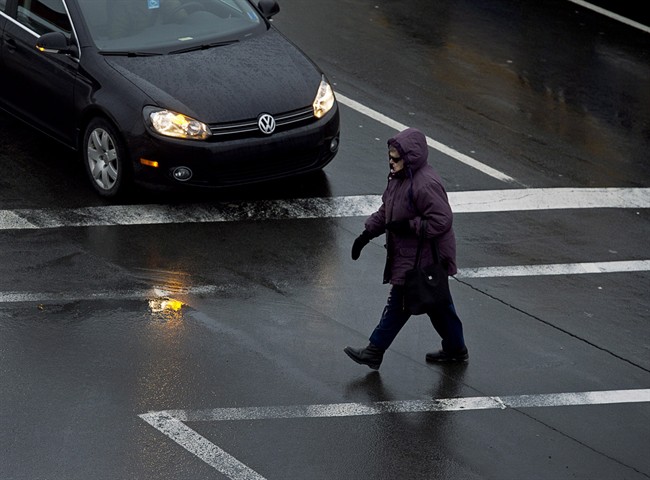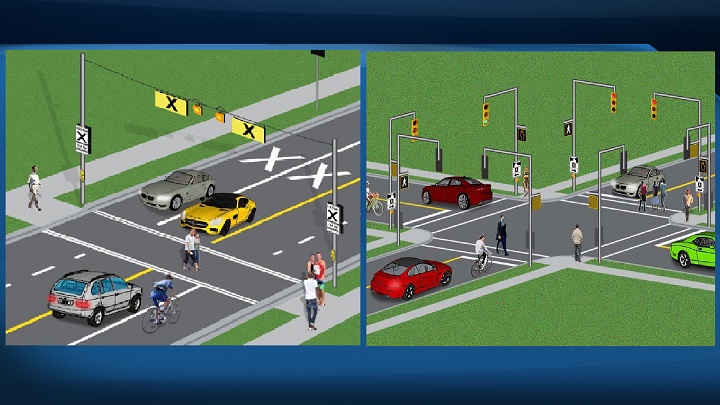As of Jan. 1, a new law in Ontario indicates drivers and cyclists must now stop and yield the whole pedestrian crossover until the person is completely off the roadway.

This rule also applies at school crossings where there is a crossing guard holding a stop sign. However, the new law does not apply at crosswalks, unless a school crossing guard is present.
READ MORE: New Ontario regulation and fee changes come into effect Jan. 1
So, what’s the difference between a pedestrian crossover and a crosswalk?
Pedestrian crossovers are identified by specific signs, pavement markings, overhead lights and push buttons.
A crosswalk is usually found at intersections with traffic signals, pedestrian signals or stop signs.
Under the new law, drivers and cyclists can be fined $150 to $500 and 3 demerit points for offences at pedestrian crossings and school crossings.
The rule changes were made in response to recommendations related to pedestrian safety in the Chief Coroner’s Report on Pedestrian Deaths released in 2012 and to numerous requests from municipalities and safety organizations.
- AGO workers reach tentative agreement ending month long strike: union
- They stayed at an ‘absolute gem’ of a Dublin hotel. Now these councillors face questions
- ‘Pretty scary’: Ill Ontario man stranded in Costa Rica finally recovering in Canada
- On the ‘frontline’: Toronto-area residents hiring security firms to fight auto theft





Comments